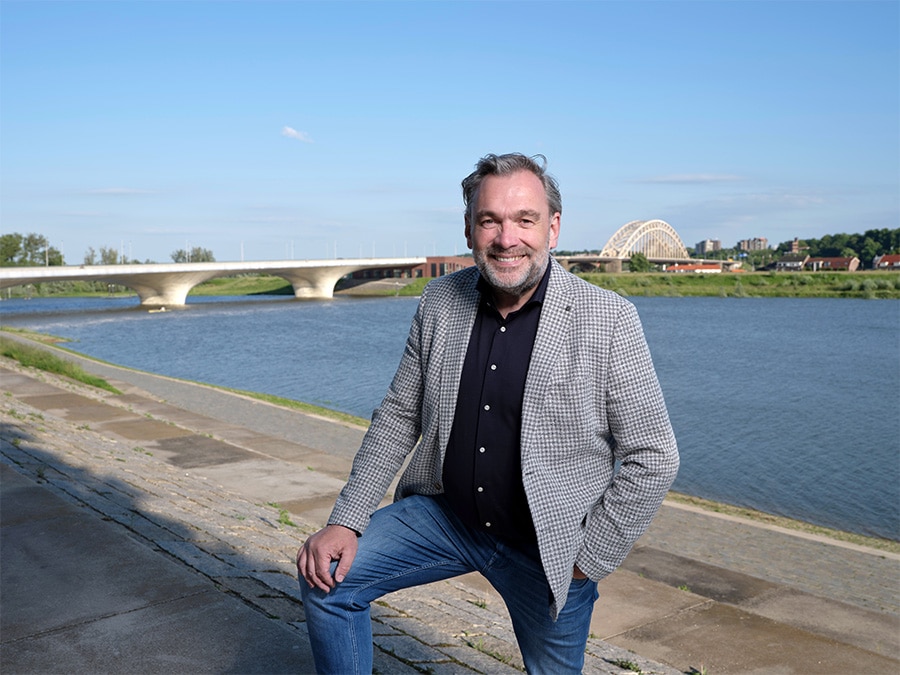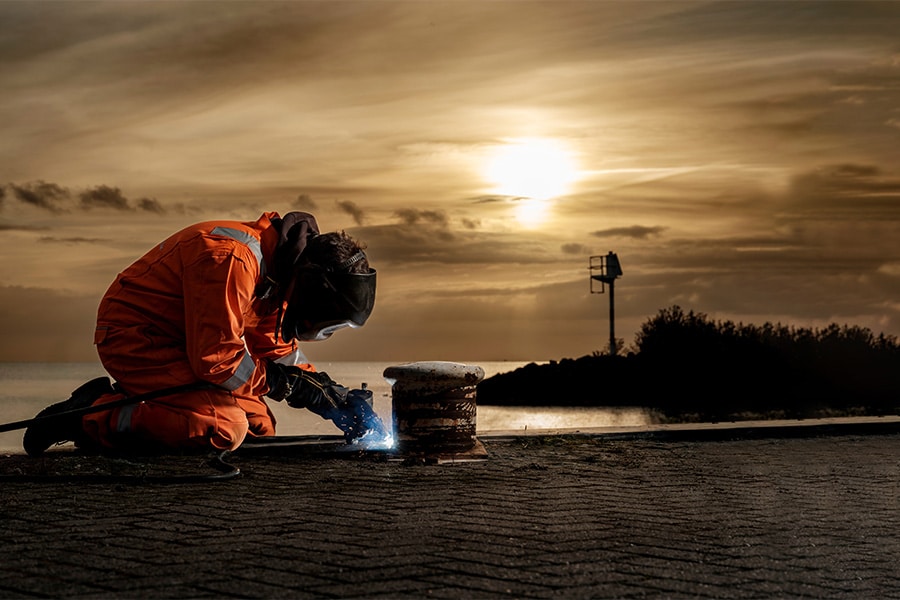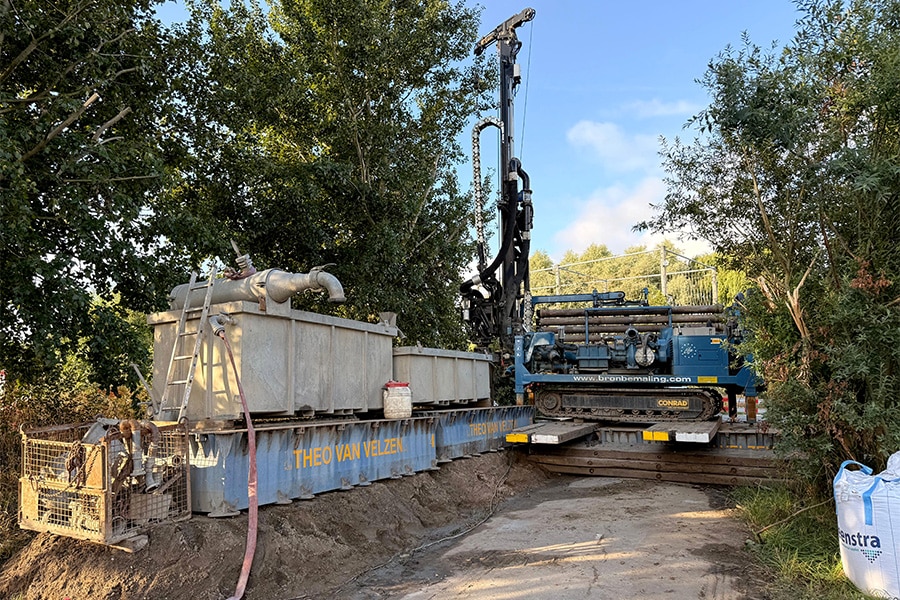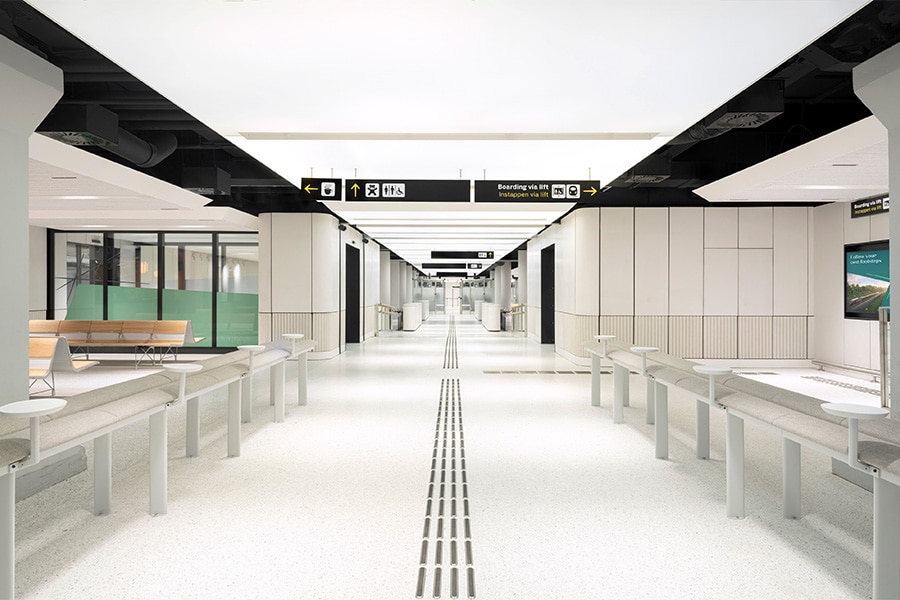
The GWW industry on the move
The backbone of our economy is flawed
Rebuilding before building was once the adage of Rijkswaterstaat and is now more topical than ever. It goes to the heart of the major task facing the Netherlands and this enormous task of conservation has even made it into the Queen's Speech. Infrastructure is the backbone of our economy and society, but it is now showing some flaws. “A solid hernia, you might say.” Speaking is Martin Wijnen, director general of Rijkswaterstaat. Together with him, in this anniversary edition, we look back at the most important developments in the GWW sector over the past fifteen years and, above all, look ahead. He also poses a pressing question to the sector.
“Many of our bridges, locks, tunnels and roads date from the period of reconstruction, shortly after World War II,” begins Wijnen. “The Netherlands of the future was then being built at a rapid pace. An enormous wave of investment also followed after the 1953 flood disaster, especially in the water domain. Before the war, the major canals were built and it was thought that they would last for eternity. Just like our road infrastructure. That assumption proved false. What once symbolized progress now demands renewal. The speed at which our infrastructure is aging can hardly be kept up with. At the same time, this presents enormous opportunities for the GWW sector. Climate change, digitization and data-driven technologies are developing rapidly and offering new opportunities. The question is not whether we should act, but how.”
From project to systems thinking
Looking back on 15 years of GWW, three developments have defined today's GWW sector, according to Wijnen. “The growth of collaboration, digitalization and the transition from project thinking to system thinking. Market relations have changed; from the days of ‘market unless’ and tight procurement contracts to a more collaborative approach. New players and international competition have also made their appearance. The realization has grown that the Netherlands no longer only builds, but above all must maintain. The Court of Audit estimated the deferred maintenance in 2024 at 34.5 billion euros, a structural issue that requires smart choices and innovative capacity. If we look fifteen years ahead, we see that this period will be dominated by this major renewal task. Houwen voor bouwen, in other words.”
Future-proof
“The Netherlands is expected to grow by two million inhabitants until 2040, and mobility per inhabitant will also grow. This puts additional pressure on networks that are already heavily burdened by traffic and transport,” Wijnen continued. “New infrastructure must be future-proof: climate change resistant, circularly designed and energy efficient in construction and use. At the same time, working in existing environments (brownfields, ed.) is becoming more complex. When replacing a major network link, there is not always room to build something new next to it. Examples include the widening of the Juliana Canal and the upgrade of the Galecopper Bridge, where the pylons and cables were replaced and traffic on the A12 was able to continue virtually unhindered. That requires planning, craftsmanship and high-level cooperation.”
Collaborate smarter
The classic client/contractor relationship is giving way to partnership, according to Wijnen. “Rijkswaterstaat and market parties are increasingly seeking each other out in the pre-contractual phase to find solutions together. Other contract forms such as two-phase contracts, framework agreements for engineering services and portfolio approaches offer more room for knowledge sharing and innovation. For example, in the spring of 2025, we bundled the award for the renewal and renovation of five tunnels into a portfolio contract. Now we are working on movable bridges, and after that come the concrete bridges and viaducts. In this way we put a larger volume in the market in one stroke, we keep knowledge and experience on board and it pays for market parties to innovate. This approach ensures that projects are carried out faster, better and cheaper. What the market can demand and expect from us is that we offer stable programming in return. Programming that demonstrates calm, cleanliness and regularity for results without noise, at a reasonable return and with a real risk for all parties.”
Resilience in an uncertain world
Society talks about vital processes that are important to keep our economy running. For Rijkswaterstaat, that translates into effective flow on the roads and waterways and ensuring water safety. “We live in a very vulnerable delta with two huge rivers crossing our country, we have to deal with sea level rise and our land is still falling,” Wijnen lists the critical factors. “Our task is to keep the system robust. And there is an important element to that: vulnerability.” Wijnen is referring to natural vulnerability such as storm surge, spring tides, cluster rains or extreme heat and drought, as well as man-made vulnerability such as cybercrime and sabotage, and finally vulnerability due to age. “All these factors affect the achievement of a robust conservation program, with the added bonus of keeping corridors open for military transport. In short, work - a lot of work! - ahead.”
Today's times call for leadership that connects, holds direction and brings people along. “The challenges are great: staff shortages, lack of nitrogen space, permits and raw materials. Yet there is also an enormous opportunity to make a systemic leap together,” Wijnen says. “In fifteen years, I hope to be able to look back on a period in which the Netherlands not only maintained its infrastructure, but raised it to a higher level. A resilient and sustainable sector that is top of the bill, can be proud of what it maintains together, and for which the Netherlands, with its top infrastructure, is regarded worldwide as a showcase of civil engineering innovation power. Therefore, I would like to ask the sector, what more can Rijkswaterstaat do to ultimately achieve that goal, that resilient and sustainable sector?”




